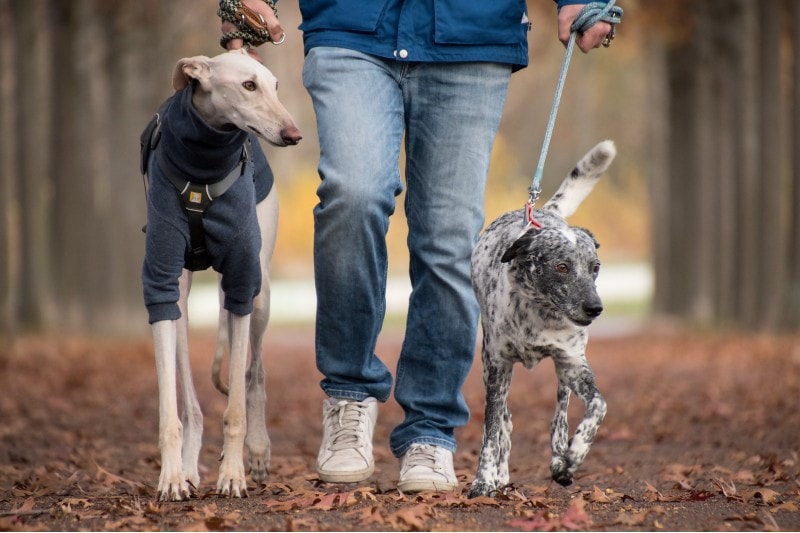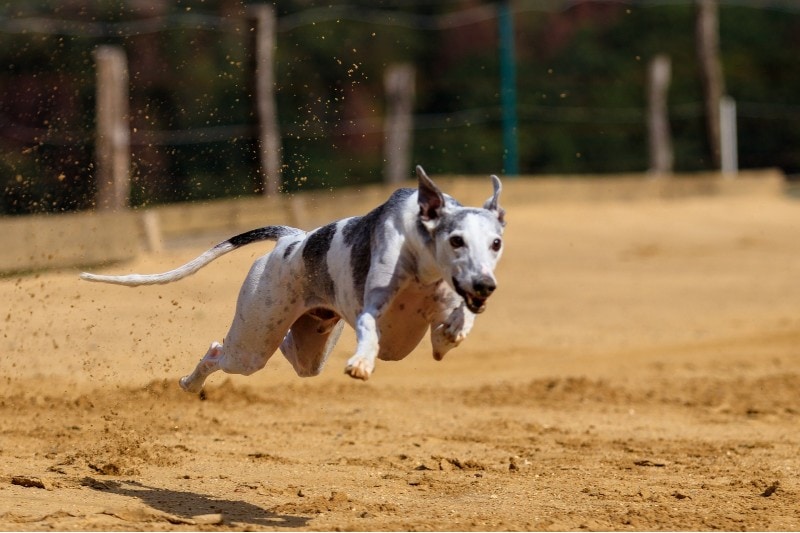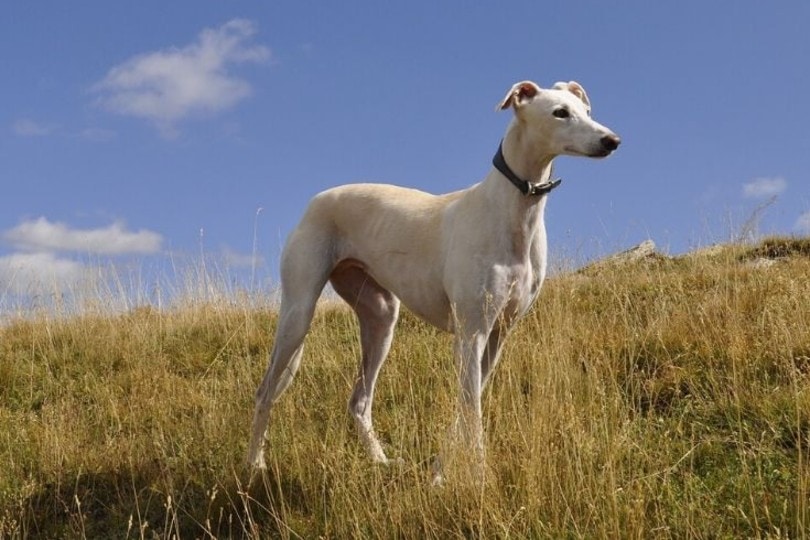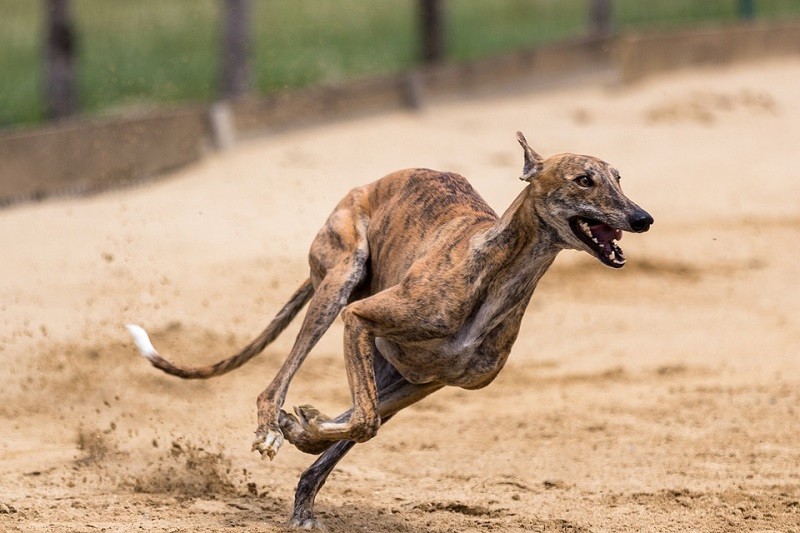Greyhounds are well known for their speed, but seeing how fast they are can be surprising. As the world’s fastest canines, Greyhounds can reach speeds of up to 72 km/h, equivalent to 45 mph, making them much faster than mere humans. However, other animals can beat Greyhounds in a long-distance sprint.
In this post, we’ll explain why Greyhounds can run so fast and examine how they compare to humans and other animals in terms of speed.
Why Are Greyhounds So Fast?
Greyhounds are so fast because of their anatomy and what they were bred for. These graceful dogs are sighthounds that were initially bred to track down and outrun their prey, which accounts partially for why they’re so adept at running. In addition to their history as hunting dogs, Greyhounds are simply built for speed.
Their hearts are huge, which allows for better circulation and, therefore, better-oxygenated muscles to help them withstand running at such high speeds. The Greyhound also has long legs, a graceful yet athletic and muscular build, lean muscles, a strong yet flexible spine, a short and fine coat, and a double suspension gait (also known as “double suspension rotary gallop”).

Greyhound Speed Comparison
Though Greyhounds are the world’s fastest dogs, they’re built to run medium rather than long distances. For this reason, other canines can beat the Greyhound in an endurance race, including Siberian Huskies, Alaskan Malamutes, and horses.
Though Greyhounds may initially run ahead of these animals due to their ability to reach high speeds incredibly quickly, Huskies, Malamutes, and horses are better suited to long-distance running than Greyhounds.
If you’re curious how the Greyhound matches up against the cheetah—the fastest land animal—the cheetah can reach higher speeds of up to 120 km/h (75 mph) and would certainly win against a Greyhound in a sprint. However, cheetahs can only sustain their top speed for around 30 seconds, so in a long-distance race, a Greyhound would triumph against a cheetah.
If we compare Greyhounds with humans, Usain Bolt’s record time in a 100-meter race was 9.58 seconds, and his top speed was 22.9 miles per hour (36 km/h). It takes a Greyhound just 5.33 seconds to run 100 meters.
Now, let’s look at how Greyhounds compare with other land animals regarding speed. The table below shows the top speeds each animal can reach.
| Animal | Top speed |
| Greyhound | 72 km/h (44mph) |
| Cheetah | 120 km/h (75mph) |
| Springbok | 88 km/h (55mph) |
| Lion | 81 km/h (50mph) |
| Ostrich | 70 km/h (43mph) |
| Domestic cat | 48 km/h (30mph) |
| Grizzly bear | 56 km/h (38mph) |

Is Greyhound Racing Cruel?
Yes. There are a host of animal welfare issues linked to the Greyhound racing industry. According to the RSPCA, Greyhound racing is dangerous because many Greyhounds suffer injuries caused by being forced to run at such high speeds around oval tracks. In some cases, the injuries result in the dog being euthanized.
As the RSPCA also notes, data from the Greyhound Board of Great Britain (GBGB) shows that hundreds of Greyhounds died due to Greyhound racing between 2018 and 2022. Moreover, the data shows that over 22,000 injuries were recorded. This speaks volumes about how unethical and dangerous Greyhound racing is for the dogs involved.
In addition, the RSPCA draws attention to the fact that some racing dogs are kept in inadequate living conditions and fed substandard food.

Summing Up
To recap, Greyhounds are medium-distance runners that can reach up to 72 km/h (45 mph). Because of their ability to reach their top speeds quickly, greyhounds are the world’s fastest dogs, but they’re not the best endurance runners. Siberian Huskies and Alaskan Malamutes are better long-distance runners, so they come out on top in an endurance race.
See also:
- 8 Types of Greyhound Dog Breeds (With Pictures)
- 9 Types of Greyhound Body Language You Need to Know (With Pictures)
Featured Image Credit: herbert2512, Pixabay








